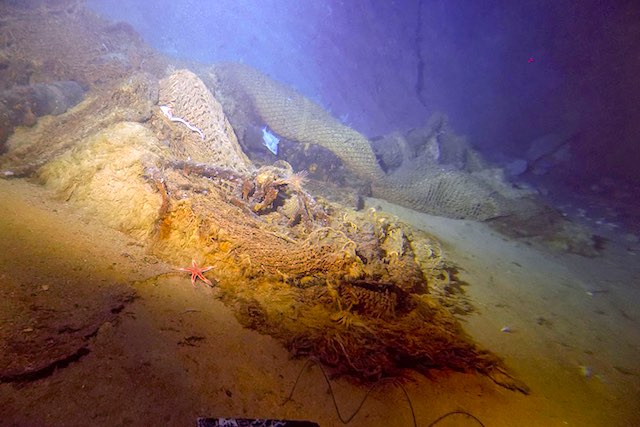
For several decades, overfishing and trawling had been devastating parts of an underwater mountain range in the Pacific Ocean next to Hawaii, wrecking deep-sea corals and destroying much of their ecological community.
However, after years of federally mandated protection, scientists can see signs that the once ecologically fertile area known as the Hawaiian-Emperor Seamount Chain is now making a comeback.
Florida State University Associate Professor of Oceanography Amy Baco-Taylor and a team from Florida State and Texas A&M University recently published their findings in the journal Science Advances.
The Hawaiian-Emperor Seamount Chain is a mainly underwater mountain range in the Pacific Ocean. From the '60s through the '80s, the area was a hotbed for fishing and a practice called trawling, where fishers use heavy nets dragged along the seafloor to capture fish. The nets scrape other animals off the seafloor in the process too.
The practice of trawling has devastated seamounts across the world, and scientists have believed that an ecological recovery was unlikely. In the case of the Seamount Chain, however, there's a glimpse of hope.

Lost trawl net from on the NW Hancock Seamount at a depth of 400 meters. (Photo by A. Baco-Taylor FSU, E.B. Roark TAMU, NSF, with HURL Pilots T. Kerby and M. Cremer)
Baco-Taylor and her colleagues led four research cruises out to the central and north Pacific Ocean to investigate the ecological communities of the region.
They particularly wanted to examine whether there was any recovery of life on the seamount chain because unlike other submerged mountain chains across the world, that one had been federally protected from fishing and trawling for decades.

A young colony of H. laauense amid a bed of other octocorals. (Photo by A. Baco-Taylor FSU, E.B. Roark TAMU, NSF, with HURL Pilots T. Kerby and M. Cremer)
In 1977, the US claimed the region as a part of the U.S. Exclusive Economic Zone, that prevented foreign fleets from trawling the area. In 2006, then-President George W. Bush included the region as part of the Papahānaumokuākea Marine National Monument, further protecting it from human disturbance.
Through the 4 research visits, scientists sent an autonomous underwater vehicle and used a human-occupied submersible to explore sites along the chain and take pictures of the seamounts roughly 300 to 700 meters below the surface.

A patch of recovering scleractinian reef on the SE Hancock Seamount at 650m. (Photo by A. Baco-Taylor FSU, E.B. Roark TAMU, NSF, with HURL Pilots T. Kerby and M. Cremer)
The group analyzed 536,000 images. In them, they not only saw the remnant trawl scars on the seafloor, but they also saw baby coral springing up in these areas. They could also see coral regrowing from fragments on fishing nets which were left on the seafloor.
Most notably, they found evidence of some precious areas that weren't harmed by the trawling. These untouched areas are crucial to further populating the seamounts with a range of fauna, researchers said.
It is too early to determine how long it took for the new coral to arrive and if the area will return to its former glory. Scientists are still analyzing coral samples to determine the age and diversity of species in the area; the researchers, however, said that this study and the ongoing work provides critical knowledge for policymakers examining the effectiveness of protecting those areas.
The news is also a significantly welcoming followup to a January 2019 report detailing how Hawaiian coral reefs were finally stabilizing after the mass coral bleaching events of 2015.
Moreover, a recent study from the University of Queensland examined how an unexplained phenomenon which makes coral spawn more than once a year is improving the resilience of the Great Barrier Reef.
The discovery was made by university researchers who investigated how to split spawning events can increase the reliability of larval supply as the reefs tend to be better connected and have more numerous and also more frequent, larval exchanges.













COMMENTS